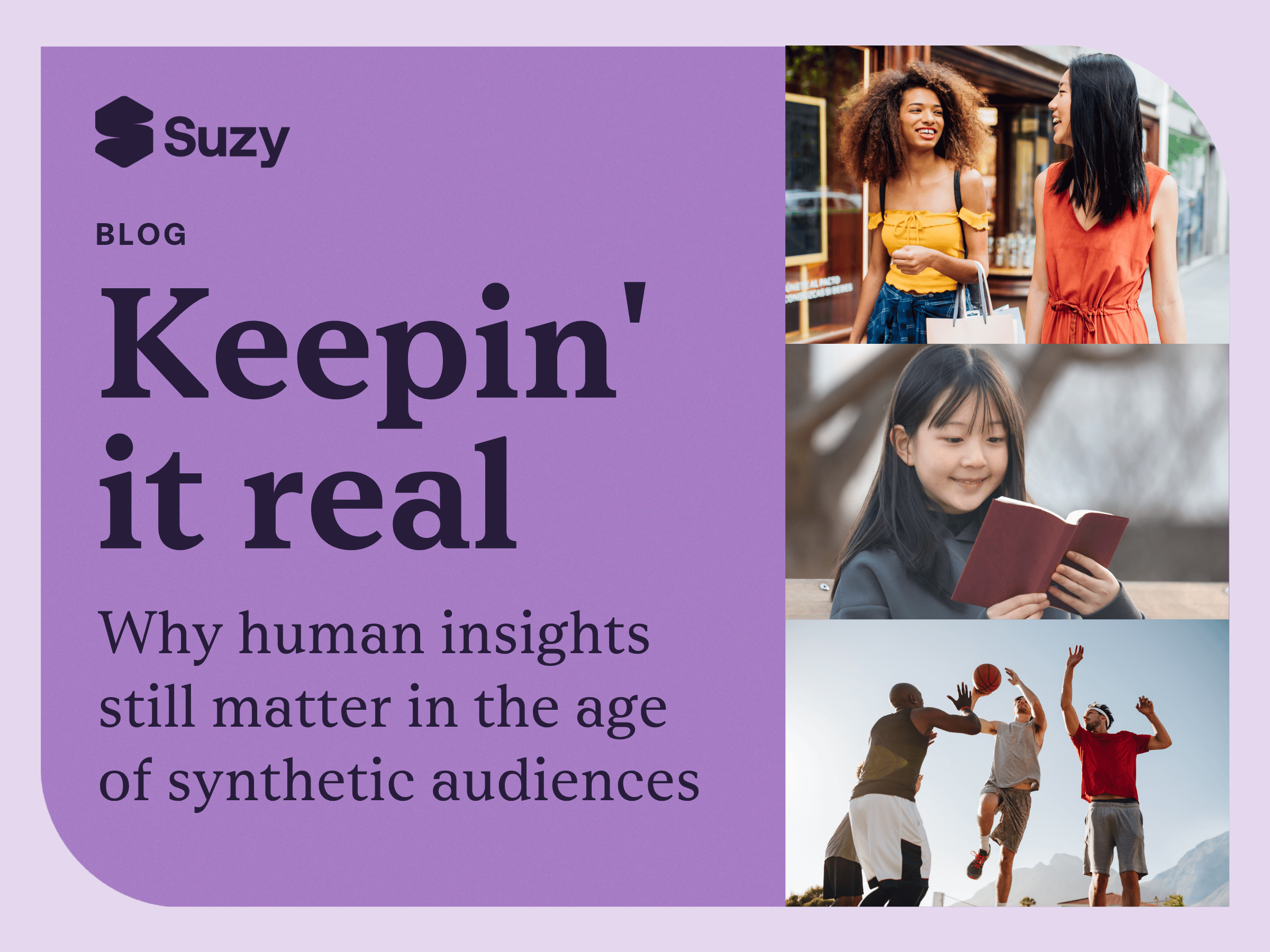Jason Kobs, Director, Customer Success at Suzy
When I first caught a national news segment about Build-A-Bear’s resurgence, my reaction was disbelief. Honestly, I thought the brand was long gone. I’ve never set foot inside one of their stores, assuming they had faded with mall culture itself. Yet there it was: not only alive but thriving.
This story of evolution, a mall-based children’s brand reimagining itself for a new era, offers powerful lessons for anyone interested in brand growth and consumer insights. How does a company pivot from being dismissed as a relic to capturing cultural relevance and even leading the stock market? Let’s explore how Build-A-Bear pulled it off and what every brand leader can learn from this unlikely comeback.
The market reality: Why Build-A-Bear’s evolution matters
In the last decade, the retail landscape has been flipped upside down. Malls, once cultural epicenters, have struggled under the weight of e-commerce convenience and shifting consumer behaviors. Many mall-based specialty retailers closed their doors for good. In that climate, it would have been reasonable to assume that a teddy bear company would suffer the same fate. Honestly, I would have bet money on it. Yet Build-A-Bear defied those expectations.
- Financial momentum: Build-A-Bear shares are up nearly 2000% over five years and ~60% year-to-date in 2025, outpacing even the most celebrated growth stocks.
- Consumer strategy: Roughly 40% of customers are now teens and adults, reflecting the rise of the “kidult” market.
This isn’t meme-stock hype. It’s a turnaround rooted in consumer shifts, and it shows what’s possible when brands evolve with culture.
Following the consumer, not the stereotype
For decades, Build-A-Bear was boxed into one image: kids dragging parents to malls for a novelty teddy bear. That picture became both its strength and its trap. The idea of a brand only for children limited its reach in the cultural imagination.
But consumer reality shifted. Adults, especially Millennials and Gen Z, began fueling demand for “kidult” products. These consumers want comfort, nostalgia, and self-expression in playful forms. Collectibles, plush toys, and even LEGOs for adults became billion-dollar categories. And honestly, who among us hasn’t seen a friend post about their Funko Pop shelf or LEGO build on Instagram?
By recognizing this, Build-A-Bear stopped chasing stereotypes and started segmenting with intent:
- Bear Cave & After Dark collections: Adult-only product lines positioned for gifting, humor, and pop-culture drops. These lines reframed the bear as a giftable, ironic, and even stylish product for adults.
- Licensed IP collaborations: Harry Potter, Pokémon, and Stranger Things capsules reframe bears as collectibles and cultural artifacts. These tie-ins tapped into fandom economies that thrive on exclusivity and cultural currency.
This wasn’t just a product refresh. It was a reframing of who the consumer actually is. The company stopped seeing adults merely as gift purchasers for children, and instead treated them as direct consumers with their own needs, motivations, and buying power.
Designing for fandom and drop culture
Modern consumer culture is driven by scarcity, novelty, and storytelling. Sneakers drop in limited quantities. Streetwear sells out in minutes. Digital assets and collectibles fuel online communities. Build-A-Bear borrowed these cues and made them their own.
- Capsules with licensed IP became social currency. A plush bear dressed as a Hogwarts student or a Pokémon character wasn’t just a toy, it was a collectible that validated belonging in a fan community.
- Drop-driven discovery created urgency and excitement. Each release gave consumers a reason to return, share online, and display purchases in their homes or on social media feeds.
The strategy worked because it intersected with behaviors consumers were already demonstrating elsewhere. Fandoms, online communities, and “shelf displays” of collectibles became part of identity. Build-A-Bear positioned itself as part of that culture rather than outside of it.
Scaling the ritual, not just the store
One of Build-A-Bear’s most enduring features is the in-store ritual: customizing a bear, choosing accessories, and inserting the symbolic heart. That experience was more than transactional; it was emotional theater. I still remember seeing commercials of kids hugging their freshly stuffed bear—it was part toy, part memory-making.
Rather than discarding that ritual as the retail landscape shifted, Build-A-Bear evolved it: the bear builder is an at-home customization platform that preserves the emotional ritual while scaling access. Online shoppers could now participate in the experience without entering a mall.
By protecting the ritual while expanding reach, Build-A-Bear proved that experience, not just product, fuels loyalty. For adults, the ritual also became nostalgic, tapping into childhood memories while offering a new way to engage.
Expanding distribution where adults are
Another critical step in the brand’s evolution was distribution. Instead of relying on declining mall traffic, Build-A-Bear went where consumers were already primed for leisure and spending.
- Partner-operated locations on cruises and resorts (e.g., Carnival, Great Wolf Lodge) turn vacations into conversion events. Families and adults on leisure trips were already in a mindset of indulgence and experience. Build-A-Bear turned that into a purchase opportunity.
- New experience stores are planned, with at least 60 new locations opening in 2025 across corporate, partner, and franchise models. These stores are designed less like traditional mall shops and more like immersive retail spaces.
By aligning its distribution strategy with cultural behaviors like vacations, entertainment, and leisure, the brand ensured relevance in places where consumers were most open to novelty and memory-making.
Loyalty reframed as collecting
Traditional loyalty programs emphasize discounts, points, and coupons. They reward repeat purchases with incremental value. Build-A-Bear took a different approach by leaning into the psychology of adult collectors.
- Points + early access fueled exclusivity, giving loyal members first rights to limited-edition drops.
- Loyalty felt like joining a collector’s club, not a transactional rewards program.
This subtle shift in loyalty strategy made customers feel like insiders, not just buyers. In a world where community and belonging are powerful drivers of behavior, Build-A-Bear turned loyalty into identity.
What brands can learn: Stealing the Build-A-Bear playbook
Build-A-Bear’s resurgence is more than a retail comeback story. It is a roadmap for how brands can evolve with culture instead of being left behind. The lessons are universal and apply across industries including CPG, tech, retail, and entertainment.
- Re-segment your category. Legacy assumptions can trap brands in outdated thinking. Build-A-Bear was once viewed as “only for kids.” But by reframing adults as primary consumers with their own needs for nostalgia, humor, and identity, the brand unlocked a new growth engine. Every company should ask: who is engaging with us in ways we have not validated yet?
- License for identity, not awareness. The best collaborations do more than create visibility. They allow consumers to express themselves. Build-A-Bear’s Harry Potter and Pokémon capsules worked because they gave fans cultural badges to display and share. The right partnership should make consumers feel proud to show off their purchase, not just add another item to their cart.
- Protect the ritual. Rituals are what turn transactions into memories. Build-A-Bear’s heart ceremony was iconic because it created meaning beyond the product. Rather than discarding it, the company scaled it digitally, proving that rituals can evolve without losing their emotional weight. Every brand has a ritual—an unboxing, an onboarding flow, a service moment. Don’t lose it; elevate it.
- Expand distribution through cultural touchpoints: Consumers no longer gather in malls. They gather in places that feel social, indulgent, and memorable. Build-A-Bear leaned into this shift with cruise ships, resorts, and immersive retail spaces, reaching customers in moments when they were already open to celebration and spending. Distribution is not only about channels. It is about aligning with culture.
- Reframe loyalty as belonging. Traditional loyalty programs are transactional. They focus on points, discounts, and coupons. Build-A-Bear reimagined loyalty as a collector’s club with early access, exclusives, and insider status. Belonging is more powerful than points. If your loyalty program feels like a transaction, you are leaving cultural and emotional equity untapped.
How Suzy powers brand evolution
Build-A-Bear’s turnaround wasn’t just about plush toys. It was about listening closely to consumers, spotting cultural shifts early, and acting with precision. That same approach is what Suzy makes possible for any brand navigating its own evolution.
Take Suzy Speaks, our AI-moderated conversational research tool. Unlike traditional surveys that capture surface-level responses, Suzy Speaks captures consumers’ real voices—their tone, pacing, and unfiltered reactions. That emotional nuance is critical for spotting motivations like nostalgia, comfort, or identity that numbers alone can’t explain. And because Suzy Speaks operates at quant scale, you don’t just hear one consumer—you hear hundreds, creating a data-rich picture of sentiment that’s authentic and representative.
Then there’s Suzy Signals, our decision engine. Signals doesn’t just recap what your research found—it connects your findings to the bigger picture. Each study is expanded with hyper-personalized trend signals powered by AI, linking brand-specific insights to cultural and economic forces shaping consumer behavior. You also receive recommended next steps, ensuring every project flows into the next phase of learning. In practice, this means your team doesn’t just react to consumer trends—they anticipate them.
In other words, the evolution that saved Build-A-Bear, seeing consumers clearly and staying aligned with their culture, isn’t unique to them. With Suzy’s AI-powered tools, any brand can bring that same clarity to its strategy and uncover its own growth story in real time.
Conclusion
When I saw that news clip about Build-A-Bear, my first thought was: “Wait, they still exist?” The brand’s comeback shows the power of evolution in real time. From mall novelty to cultural relevance, Build-A-Bear proves that no brand is “dead” if it can align with shifting consumer insights.
If a teddy bear brand can reinvent itself for Millennials and Gen Z adults, what’s stopping yours?
Want to see what consumer-led brand evolution looks like for your business? Book a demo with Suzy or explore how our AI-powered insights platform, featuring Suzy Speaks and Suzy Signals, can uncover your next growth opportunity.
.webp)
.png)






